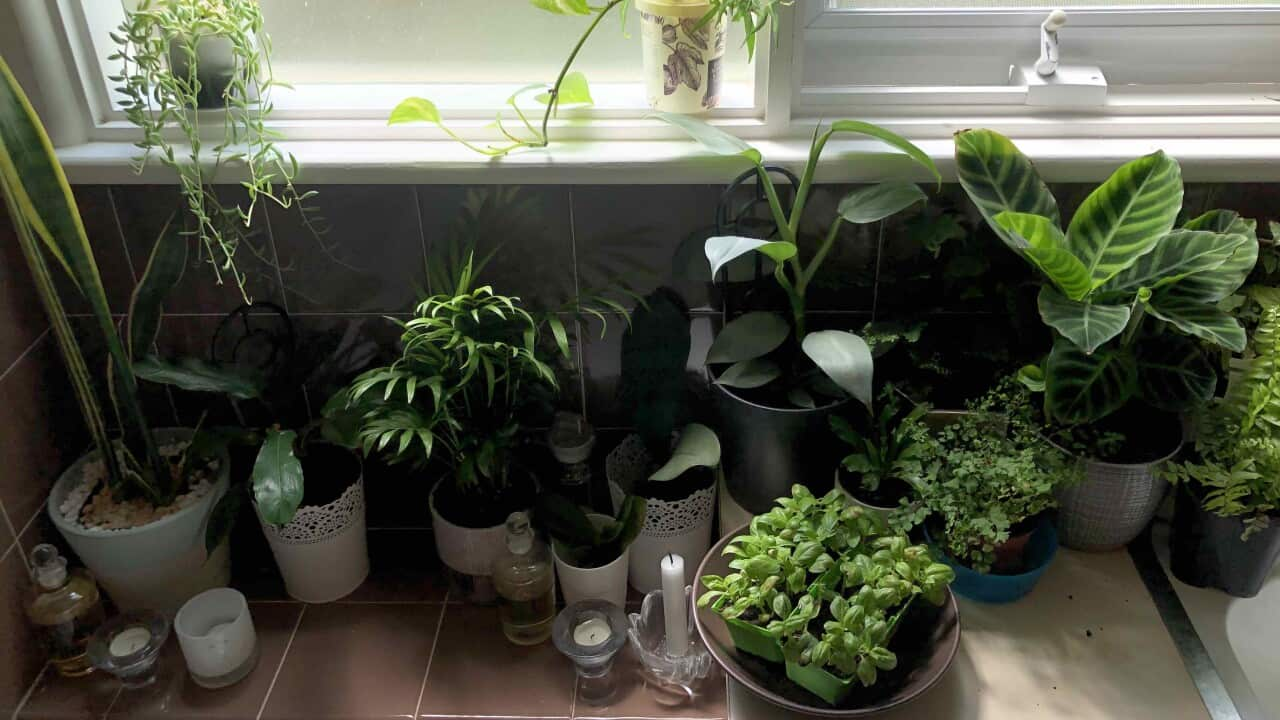Highlights
- Research shows living near greenery is beneficial for one’s physical and mental health.
- Two in five Australians bought a low-maintenance indoor plant in the past 12 months.
- Over 40 per cent of Australians don’t know when to water their plants.
Living close to greenery can alleviate stress, improve sleep, and reduce the risks of cardiometabolic diseases like diabetes according to research by associate professor Xiao Qi Feng, an expert in built environment and health at the University of New South Wales.
Feng recommends growing plants indoors as the fragrance and taste of home-grown greens can positively enhance one’s overall wellbeing.
It provides sense of hope and life continues especially during the lockdown time.
A recent Plant Trend 2020 report by researchers from RMIT University and University of Melbourne found that two-in-five Australians purchased a low-maintenance plant in the last 12 months.
The report says that placing one medium-sized plant to a medium-sized room improves air quality by up to 25 per cent.

Source: Supplied
What sort of plant should I choose?
Plant curator, architect and author, Jason Chongue is passionate about plants with over 300 pots dotted around his home, including a banana tree in his bedroom.
Chongue is expecting an upward trend in indoor gardening during COVID-19 due to social distancing rules.
For beginners, he recommends starting with easy plants like devil’s ivy, peace lily and monsteras.
They almost teach you how to garden because if there’s physical signs that one might be thirsty or they are not happy but they won’t punish you straight away.
The Plant Trend report recommends five as the magic number to start growing your indoor greens.
In fact, 30 per cent of Australians already own more than five house plants.
Chongue, also an interior designer, suggests assessing the lighting conditions around your home to shortlist the kinds of greenery you can plant indoors.
Once you’ve got that shortlist, it’s important to think about colour, texture, leaf, shape, and foliage pattern even.

Source: Supplied
When should I water my plants?
Research shows that over 40 per cent of Australian gardeners struggle to know when to water their plants.
Chongue explains that plants are lifeforms of their own, whilst it is important to feed your plants sufficient water, it does not mean doing so every day.
As a general guide, he waters indoors once a week in the warmer months and once every two to three weeks in the cooler months.
Gardening as ‘meditation’?
Gardening and caring for hundreds of plants have helped Chongue find a sense of peace in his daily routine during Melbourne’s lockdowns. He likens gardening to meditation.
A lot of people are anxious understandably because of the unknown. For me, being able to switch off from that is important.
He is seeing a greater need for the elderly to use gardening in finding stability out of the unpredictable.
Chongue knew of a 96-year-old woman who gardened till the day before she passed away.
She couldn’t leave because of the lockdown rules so being able to go outside and have some routine was important for her.
Andrew Mehesa from the Urban Green Farms agrees that based on scientific research, gardening or even growing your own food from home can improve your mental state.
How to grow edible greens indoors
Many of Mehesa’s elderly clients are keen to learn how to plant edible greens indoors. He noticed that gardeners of Italian and Vietnamese backgrounds who traditionally like to cook their home-grown herbs are also moving to indoor gardening.
We have many examples of older people going, I don’t want to go outside anymore, I’ve got cancer or I’ve got arthritis, and it gets really cold outside, I want to grow my own food internally.
Some are turning to fish tanks to grow food using the aquaponics system, which combines aquaculture with hydroponics in a symbiotic environment. Mehesa says people who previously avoided fish tanks due to the inconvenience of cleaning and maintenance are now getting into aquaponics growing micro herbs like basil, parsley, watercress and strawberries.
Mehesa says people who previously avoided fish tanks due to the inconvenience of cleaning and maintenance are now getting into aquaponics growing micro herbs like basil, parsley, watercress and strawberries.

Source: Supplied
The fish, when the waste is taken up to the tank, the plants absorb all of that waste and then it recirculates clean fresh water back.
Is permaculture the answer to growing food at home?
Permaculture blogger and sustainability educator, Anna Matilda, also known as the “Urban Nanna” has also been busy during the pandemic. She had to learn to become resourceful cooking food from the limited ingredients she had.
Doing that kind of learning can give you a heightened sense of success and that’s really important and it just boosts your ability to deal with uncertainty and changes that are unexpected.
Matilda’s sustainable living philosophy is especially gaining traction offshore from people who live in small dwellings in Scandinavian and South East Asian countries.
During a pandemic, obviously if you can produce a bit of your own food that reduces your need to actually go out to the shops therefore maybe exposing yourselves.
Permaculture originates from the two words: “permanent agriculture”.
Put simply, it is about living in harmony with the natural world using resources widely shaped by 12 basic principles which guides and slows down people’s lifestyle.
Matilda explains that at the centre of permaculture is three main ethics comprised of earth care, people care and fair share - very much a way of life before technology became ubiquitous.
Matilda’s green thumb has successfully grown food all over her rental property with ease.
She recommends growing lettuce, beetroot, herbs like tomatoes, chillies, and eggplants that grow well near a sunny window.
You just pop a few pots by the window, fill them up with some soil and put a few seedlings in it, and within a few weeks you tend to start having a bit of produce coming through.
Matilda says keen gardeners can even grow ginger and turmeric to reduce inflammation and boost immunity.
She believes many things are possible and achievable to grow in confined indoor spaces with the right care.
All plants are living things and they need to have light, water, air, and a bit of protection and you can just move pots around the house.







